
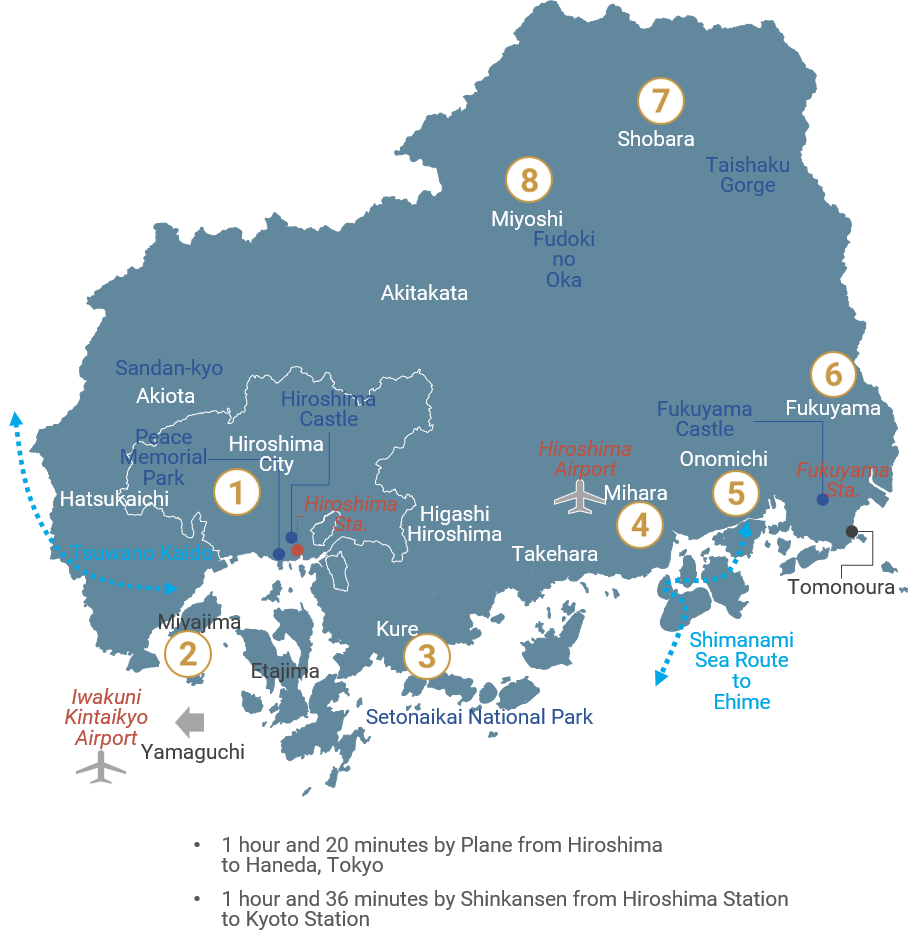
Hiroshima City, the prefectural capital, was founded by feudal lord Mouri Terumoto in 1589. Known for being the first city targeted by an atomic bomb in 1945, it now symbolizes peace and resilience, with beautiful scenery along the Seto Inland Sea
Video by Hiroshima Tourism Association, © Hiroshima Tourism Association.
Formally known as Itsukushima, it's a small island at the westernmost tip of Hiroshima Bay, 20 km from Hiroshima City. A historic site of nature worship, its famous Itsukushima Shrine was built to its current scale in 1168 under Taira no Kiyomori's patronage
Video by Hatsukaichi City, © Hatsukaichi City.
About 30 minutes by train from Hiroshima City, Kure City was once a thriving military port where the battleship Yamato was built. It still hosts a Maritime Self-Defense Force base. Along the port's slopes, there are historic buildings unique to Kure, built from the early 1900s
Video by Kure Ciy, © Kure Ciy.
Mihara City, southern Hiroshima Prefecture, historically crucial for transportation, connecting Kinki, Kyushu, and Shikoku. Features robust land, sea, and air networks, including Hiroshima Airport. Home to Buttsuji Temple, a prominent Zen training center in Japan
Video by Mihara City, © Mihara City.
Onomichi, a historic port since 1169, attracted trade ships and travelers, fostering commerce and culture. Its scenic beauty and rich history have inspired artists and writers. Recently, it's gained fame as a popular filming location, known as the "town of cinema"
Video by Onomichi City, © Onomichi City.
Known for its thriving textile industry since the Edo period, Fukuyama features "Fukuyama Castle," the only castle with iron plate coverings, restored in 2022. Tourist attractions include "Tomonoura," the scenic model for the anime "Ponyo on the Cliff by the Sea"
Video by Fukuyama City, © Fukuyama City.
Shobara preserves myths from the Kojiki, Japan's oldest historical record, including those about the legendary goddess in Mount Hiba. Surrounded by 1200-meter-high peaks and forests, it has a unique satoyama culture. Located in the Chugoku Mountains, it is also known for heavy snowfall
Video by Shobara Tourism Association, © Shobara Tourism Association.
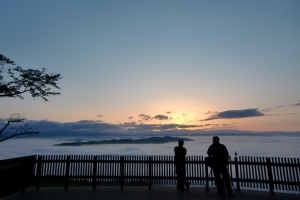
Centrally located in the Chugoku region, Miyoshi is a key transport hub linking the San'in and Sanyo areas. Known for mountain sand iron, it also features the popular "Sea of Fog" viewable from Mount Takatani on clear mornings from autumn to early spring
Photo by Miyoshi Association of Tourism and Town Development, © Miyoshi Association of Tourism and Town Development.
The Hiroshima Peace Memorial Museum, designed by Mr. Kenzō Tange and built by Obayashi Corporation, opened in 1955 to convey the reality of atomic bomb damage and promote nuclear disarmament and lasting world peace
Video by Obayashi Corporation, © Obayashi Corporation.
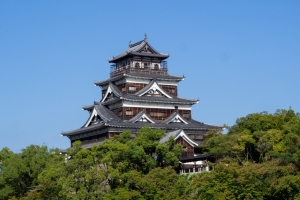
Hiroshima Castle, built in 1589 by Mōri Terumoto, was destroyed in the 1945 atomic bombing and reconstructed in 1958. Now a museum, it showcases Hiroshima's history and samurai culture, symbolizing the city's resilience with panoramic views and cultural events
View on Google MapsShukkeien Garden, established in 1620 by Hiroshima's first feudal lord Asano Nagaakira and designed by tea master Ueda Sōko, was devastated by the 1945 atomic bombing. Restoration began in 1949, taking about 30 years to return the garden to its original appearance
Video by Hiroshima Prefectural Art Museum, © Hiroshima Prefectural Art Museum.
Built in 1968, the Hiroshima Prefectural Art Museum, adjacent to the scenic Shukkeien Garden, hosts a collection of over 5,200 artworks, highlighting pieces from the 1920s-30s, including Dali's "Dream of Venus", Japanese and Asian crafts, and local works
Video by Hiroshima Prefectural Art Museum, © Hiroshima Prefectural Art Museum.
The Hiroshima Museum of Art, inaugurated in 1978, is a "metropolitan oasis" nestled in Hiroshima's city center. With lush greenery, it offers a serene setting to appreciate a collection of approximately 300 artworks, including Impressionist masterpieces and Japanese modern art
Video by Hiroshima Museum of Art, © Hiroshima Museum of Art.
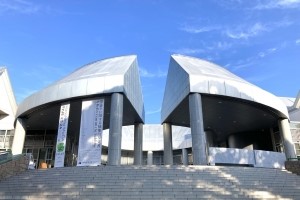
Opened in 1989, Hiroshima MOCA is Japan's first public contemporary art museum. It showcases both local and international works, particularly those connected to Hiroshima. Situated in Hijiyama Park, visitors can enjoy seasonal landscapes en route to the museum
View on Google Maps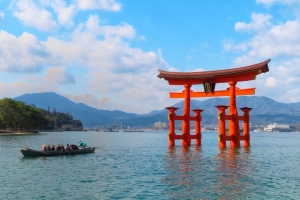
Founded by Saeki no Kuramoto in 593 CE, Taira no Kiyomori, the governor of Aki Province, revered Miyajima and rebuilt the shrine in the Shinden-zukuri style in 1168. Subsequent renovations have preserved the shrine. It became a World Heritage Site in 1996
View on Google MapsThe Mazda Museum, located on Mazda's premises, attracts visitors from around the world. It showcases Mazda's history since the 1920s, alongside historic cars, and offers insights into rotary engine technology and car manufacturing processes
Video by Mazda, © Mazda.

The Onomichi City Museum of Art, established in 1980, was redesigned by Mr. Tadao Ando and reopened in 2003 with a renewed focus: "nurturing the local community, inspiring future aspirations, and global sharing beyond borders and genres
Photo by Onomichi City Museum of Art, © Onomichi City Museum of Art.
Senkou-ji sits on Mount Daihōzan's slopes, offering views of Onomichi Port. Founded by Kobo Daishi in 806 CE, its distinctive stage-style main hall dates to 1686. The picturesque temple attracts many literati drawn to the scenic harbor town
Video by Senkouji, © Senkouji.
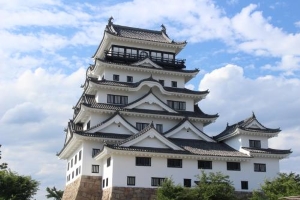
Fukuyama Castle, built by Mizuno Katsunari, a cousin of Tokugawa Ieyasu, in 1622, was the only castle in Japan with iron plates on the northern keep for defense. Restored with nationwide donations, it reopened in 2022 as an interactive museum
Photo by Fukuyama City, © Fukuyama City.
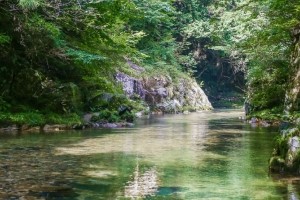
Yuki Town has two hot spring areas, Yuki and Yunoyama. Historically known for their healing properties, these resorts attract many visitors seeking relaxation and therapy, surrounded by lush nature, from early summer greenery to autumn leaves
Photo by Hiroshima Tourism Association, © Hiroshima Tourism Association.
Daisho-in, the oldest temple on Miyajima, was founded in 806 CE by Kobo Daishi after returning from China and training on Mount Misen. In 1996, the World Heritage listing of Itsukushima Shrine included the surrounding sea and 431.2ha of Misen's primeval forest
Video by Daisho-in, © Daisho-in.
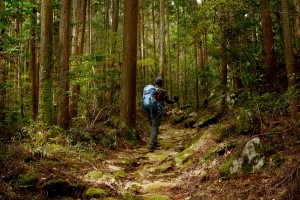
The Tsuwano Kaido, an ancient road from Tsuwano in Shimane Prefecture to Hatsukaichi, was historically used by the Tsuwano Domain for official travel during the Edo period. With ties to the persecution of Christians in Nagasaki, it's now a favored hiking destination
Photo by Hatsukaichi Tourism Association, © Hatsukaichi Tourism Association.
Designated in 1934, Setonaikai National Park is one of Japan's first national parks. It is renowned for its stunning seascape of numerous islands and a unique blend of natural beauty and human culture shaped over centuries
Video by Ministry of the Environment, © Ministry of the Environment.
Tomonoura, situated amidst the picturesque Seto Inland Sea islands, stands as Japan's sole preserved Edo-era port town, with facilities. Its streets exhibit merchant mansions and traditional culture, earning it UNESCO "Memory of the World" status in 2017
Video by Japan Heritage Tomonoura Promotion Council, © Japan Heritage Tomonoura Promotion Council.

The Chugoku region's first national park. Highlights include the "Hiba Village" depicting Chugoku Mountains' scenery, and the "Flower Square" boasting abundant blooms from spring to autumn, alongside various recreational areas
Photo by Bihoku Hillside Park, © Bihoku Hillside Park.
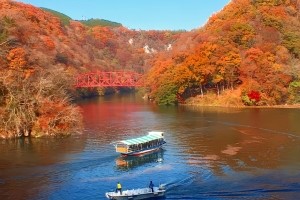
Taishakyo, spanning 18 kilometers across Shobara City and Jinseki-Kogen Town in Hiroshima Prefecture, is a national park located in central Chugoku Mountains. Designated a national scenic spot, it features limestone caves and a large natural bridge formed by erosion
View on Google MapsSandankyo is a 16-kilometer-long grand canyon in the Nishi-Chugoku Sanchi Quasi-National Park, famous for its stunning beauty. Notable sights within the gorge include Kurobuchi Pool, Sarutobi Rock, Nidandaki Falls, and Sandandaki Falls
Video by AKIOTA City Management Inc, © AKIOTA City Management Inc.
The terraced rice fields of Ini, showcasing Edo-era techniques, mirror the sky in spring, turn green in summer, and glow golden in autumn. This landscape preserves traditional Japanese life and culture, with a café offering views of the terraces
Video by AKIOTA City Management Inc, © AKIOTA City Management Inc.
Honors the Touka deity enshrined at Enryu-ji Temple, established in 1619 by feudal lord Asano Nagaakira. It is a historic early summer festival dating back to the Edo period. It is also called the "Yukata Wearing Festival" and heralds the arrival of summer in Hiroshima City
Video by Toukasan, © Toukasan.
In 1567, Kobayakawa Takakage, the third son of strategist Mori Motonari, built a sea castle in Mihara Bay to control the Seto Inland Sea navy. The Yassa Dance began as a celebration, with people of all ages dancing, singing, and playing instruments in joy
Video by Junior Chamber International Mihara, © Junior Chamber International Mihara.
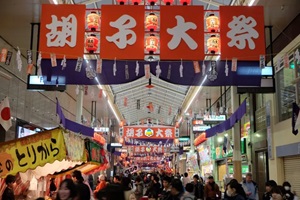
The Ebisutaisai Festival or Ebessan, held annually on November 18-20 at Ebisu Shrine in Hiroshima City, has been an autumn celebration since the Edo period, honoring the god of prosperity. On the evening of the 18th, Chuo Street features kagura and drum performances
Photo by Hiroshima Tourism Association, © Hiroshima Tourism Association.
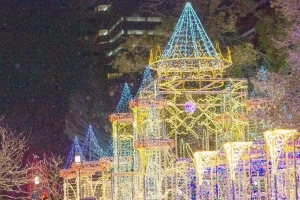
Dreamination, combining "dream" and "illumination," is a major Hiroshima event since 2002. Perfect for exploring the city or family outings, colorful lights adorn the trees along Peace Boulevard from mid-November to early January
View on Google MapsThe Betcha Festival, held annually in Onomichi from November 1-3, features masked participants chasing children and townspeople, tapping them with "sasara" and "iwai-bou" sticks. Being tapped is believed to bring intelligence, fertility, and a year of good health
Video by Onomnichi Betcha Festival, © Onomnichi Betcha Festival.
In Hiroshima, okonomiyaki stands out as a signature dish, distinct from the version in Osaka. Originating from flour provided as post-war aid, Hiroshima-style okonomiyaki is crafted by layering accessible ingredients. With a rich heritage of oyster farming dating back to the Muromachi period (1336-1573) and a mild climate, Hiroshima enjoys blessings from both sea and mountains. This culinary tradition, combined with strong hometown pride, has led to various regional styles of okonomiyaki, such as "Fuchu-yaki," "Shobara-yaki," "Onomichi-yaki," and more.
While many countries preserve diverse regional cuisines, Japan also offers its unique culinary journey. This video highlights select dishes, showcasing distinct local specialties and historical influences in the region
Video by Ministry of Agriculture, Forestry and Fisheries, © Ministry of Agriculture, Forestry and Fisheries.
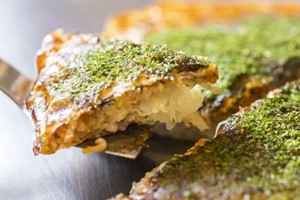
Hiroshima-style okonomiyaki features a thinly spread wheat flour batter layered with cabbage, pork, and yakisoba noodles, then topped with thinly cooked egg. It's typically served with a rich, sweet sauce, often accompanied by mayonnaise according to preference
Photo by Hiroshima Tourism Association, © Hiroshima Tourism Association.

Hiroshima boasts the highest oyster production in Japan. Nutrient-rich rivers from the Chugoku Mountains flow into Hiroshima Bay, enhancing the flavor and nutrition of its seafood. Popular dishes include raw, grilled, steamed, and fried oysters, oyster hot pot, and oyster rice
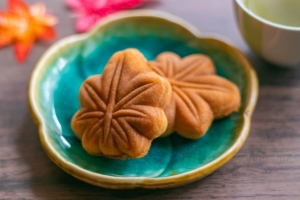
Momiji Manju, invented by confectioner Mr. Tsunesuke Takatsu in the late Meiji era at the request of Iwaso Ryokan's proprietress, has since become a celebrated delicacy in Hiroshima, featuring a variety of fillings
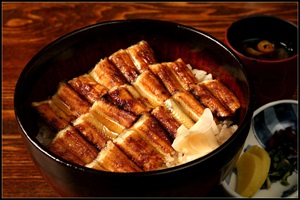
Anago-meshi, a specialty from Miyajima, features tender conger eel and rice with a special sauce. It began in 1901 when Mr. Tanikichi Ueno sold conger eel-topped rice near Miyajima Station (now Miyajimaguchi Station)
Photo by Anago-meshi Ueno, © Anago-meshi Ueno.
Hiroshima leads Japan in lemon production. Known for their high sugar content from ripening on the tree, sun-kissed "Setouchi Hiroshima Lemons" can be eaten whole, skin and all. They are primarily grown on islands like Kure, Onomichi, and Osakikamijima
Video by JA Hiroshima Kajitsuren, © JA Hiroshima Kajitsuren.
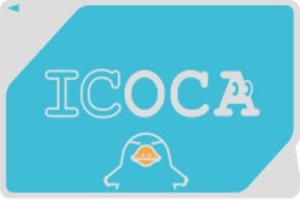
JR West issues the ICOCA card, a rechargeable smart card for transportation and shopping, akin to Suica. It facilitates easy fare payment on trains, buses, and at stores nationwide. However, it's region-specific and cannot be used for inter-JR region travel, except for special Shinkansen deals via Express Reservations

JR WEST offers various ticket deals and passes catering to different travel needs in western Japan. Find your best from the above link
Hiroshima Electric Railway, or Hiroden, based in Hiroshima Prefecture, operates six streetcar lines within Hiroshima City, the Miyajima railway line, and bus services that extend to the Kure City Area, in addition to express buses connecting other prefectures

MOBIRY Digital Tickets offer convenient travel in Hiroshima, covering Hiroshima City, Miyajima, Kure, Etajima, and northern Hiroshima Prefecture. Accessed via a smartphone app, they provide easy access to Hiroden streetcars, buses, ferries, and shared bicycles
Offers discounts and services at tourist sites and dining venues. Tourists receive it free when purchasing select Hiroden passes at participating hotels, including the 1-Day Streetcar Pass or 1-Day Streetcar and Ferry Pass, Meipuru-P City Loop Bus 1-Day Pass, or Peacecle One-Day Pass
Nexco West, one of Japan's three expressway management companies, offers international car renters unlimited access to the San'in-Setouchi-Shikoku Expressway for a flat fee, covering most sections, with some exclusions
In 1949, as a symbol of post-war recovery, the Hiroshima Carp emerged. Named after the local carp delicacy and inspired by Hiroshima Castle, the team stands out as the only citizen-owned professional baseball team among Japan's 12 teams
Video by Hiroshima Toyo Carp, © Hiroshima Toyo Carp.
Kagura is Japan's oldest performing art, rooted in regional cultures and traditions. It is offered to local deities during rituals. Hiroshima's Kagura blends influences from Izumo and Iwato traditions. Today, it is a beloved folk art at festivals and celebrations
Video by Hiroshima Tourism Association, © Hiroshima Tourism Association.
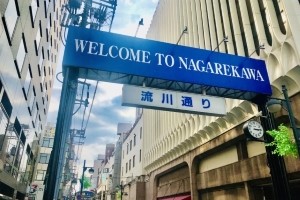
Premier entertainment district in Chugoku and Shikoku. Along with Yagenbori and Shintenchi, it forms a bustling area with numerous outlets. Nearby are Hiroshima Hondori Shopping Street, Kamiya-cho, and Hatchobori. The nearest station is Hiroden "Ebisu-cho"
View on Google MapsHiroshima Prefecture, part of Japan’s Chugoku Region, has Hiroshima City as its capital. It is home to two UNESCO World Heritage sites: the Atomic Bomb Dome and Miyajima’s Itsukushima Shrine. With a varied landscape and the tranquil Seto Inland Sea—celebrated in the Manyōshū, Japan’s oldest anthology of poetry compiled in the 8th century—Hiroshima embodies both natural beauty and a spirit of peace and renewal rooted in history and culture.
Video by Hiroshima Tourism Association, © Hiroshima Tourism Association.